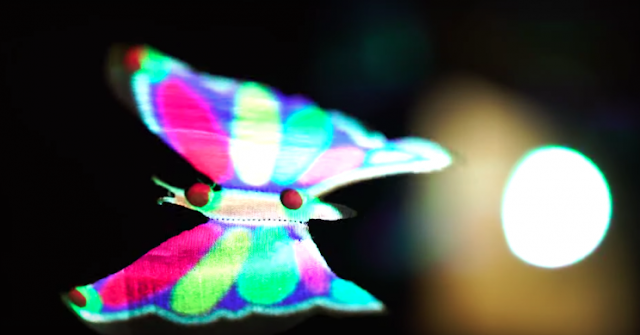SCIENTISTS CREATED A "HOLOGRAM" THAT YOU CAN FEEL AND HEAR
The word hologram very likely brings back memories of the Star Wars Skywalker saga, which is coming to its end this month. Almost in anticipation of the upcoming movie event, it seems, a group of researchers has revealed that we might be one step closer to Star Wars-like hologram technology in real life.
Except, what they are working on is not a hologram in a traditional sense. The scientists behind the creation prefer to call their work a 3D projection.
While it looks like a hologram, it actually involves incredibly light floating material that is manipulated using ultrasound waves. These ethereal 3D projections can be touched by users and also emit sounds.
 |
| Advertisement click for more info |
A tactile hologram
Researchers at the School of Engineering and Informatics of the University of Sussex recently published a paper outlining how they created a method for displaying what could be described as a tactile hologram
"Our new technology takes inspiration from old TVs which use a single color beam scanning along the screen so quickly that your brain registers it as a single image," said Dr. Ryuji Hirayama, a JSPS scholar and Rutherford Fellow at the University of Sussex and lead author of the research paper, in a press release.
"Our prototype does the same using a colored particle that can move so quickly anywhere in 3D space that the naked eye sees a volumetric image in mid-air."
The system, which the researchers call the Multimodal Acoustic Trap Display (MATD), uses an LED projector, a speaker array, and a foam bead. The speakers emit ultrasound waves that suspend the bead in the air and rapidly move it, allowing it to create illusions as it moves and reflects light from the projector.
These illusions, or volumetric images, are what so closely resemble holograms. Except, unlike holograms, their three-dimensional shapes can be seen from all angles.
 |
| Advertisement click for more info |
On top of that, they can be felt:
"Even if not audible to us, ultrasound is still a mechanical wave and it carries energy through the air. Our prototype directs and focuses this energy, which can then stimulate your ears for audio, or stimulate your skin to feel content," said Dr. Diego Martinez Plasencia, co-creator of the MATD and a researcher on 3D user interfaces at the University of Sussex.
A step closer to the ultimate display?
“Our MATD system revolutionizes the concept of the 3D display," said Project leader Sri Subramanian, Professor of Informatics at the University of Sussex.
"It is not just that the content is visible to the naked eye and in all ways perceptually similar to a real object while still allowing the viewer to reach inside and interact with the display."
“It is also the fact that it relies on a principle that can also stimulate other senses, putting it above any other display approaches and getting us closer than ever to Ivan Sutherland’s vision of the Ultimate Display.”
“Our prototype does the same using a colored particle that can move so quickly anywhere in 3D space that the naked eye sees a volumetric image in mid-air.”
The system, which the researchers call the Multimodal Acoustic Trap Display (MATD), uses an LED projector, a speaker array, and a foam bead. The speakers emit ultrasound waves that suspend the bead in the air and rapidly move it, allowing it to create illusions as it moves and reflects light from the projector.
These illusions, or volumetric images, are what so closely resemble holograms. Except, unlike holograms, their three-dimensional shapes can be seen from all angles.





Comments
Post a Comment
🍸🍸🍹🍹